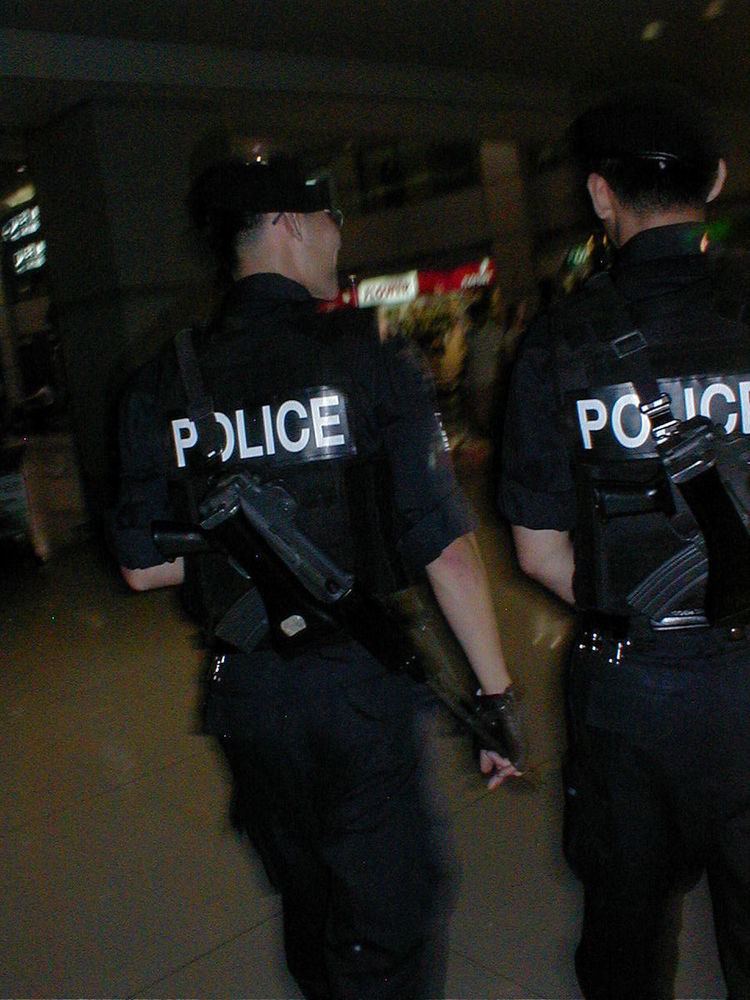In service 1984–present | Place of origin Republic of Korea Used by See Users | |
 | ||
Wars Gulf WarWar in AfghanistanIraq WarConflict in the Niger Delta2006 Fijian coup d'étatIraqi insurgency Designer Agency for Defense DevelopmentS&T Motiv | ||
Daewoo Precision Industries K2 assault rifle was developed by the South Korean Agency for Defense Development and manufactured by S&T Motiv (formerly Daewoo Precision Industries). It is currently the standard service rifle of the Republic of Korea Armed Forces. Shoulder-fired and gas-operated, the K2 is capable of firing both 5.56×45mm NATO and .223 Remington ammunition. The K2 supplanted the M16A1 assault rifle for the Republic of Korea Armed Forces since its adoption in 1984.
Contents
Development
Although the K1 entered service 3 years before the K2, the development of the K2 assault rifle started many years earlier. Facing the eventual expiration of the Republic of Korea's license to produce the M16A1 (Colt Model 603K), president Park Chung-hee, who strongly believed in self-reliance in national defense, ordered the development of an indigenous standard military firearm. Engineers with the Agency for Defense Development began the project named XB rifle in 1972, resulting in the K2 assault rifle in 1983.
Design
Six different prototypes were made during the XB development. Of the 6 designs, the XB6 was selected. Some parts of the XB6 resembled FN FNC such as the suppressor and sights. Further development of the XB6 evolved into the XB7 and finally the XB7C, also known as the XK2. Externally similar in appearance to the AR18, the K2 uses polymer for the forearm, pistol-grip and side-foldable buttstock. The fire control system and bolt carrier group are derived from the American M16 rifle, but few of the parts, including the bolt and carrier, are interchangeable with the M16. The gas operating system is derived from the AKM. The K2 uses the same magazine as the M16. The barrel rifling has 6 grooves, 1-in-7.3 right hand twist. The K2 has 3 selective firing modes: semi-auto, 3-round burst, and full automatic.
The K2 can be equipped with the DPI K201, an undercarried 40×46mm single shot grenade launcher patterned after the American M203. The Republic of Korea Armed Forces originally planned to replace the entire K2 with new S&T Daewoo K11 dual-barrel air-burst weapon. However, high cost and skepticism over the effective firepower of the 20mm grenade led to the decision to provide 2 K11s to each squad, keeping 2 grenadiers as well. Consequently, the standard 9-person infantry squad of the Republic of Korea Armed Forces is currently equipped with 2 K2 rifles, 2 K2 rifles with K201 grenade launcher, 2 K11 DAWs, 1 K3 light machine gun, and the rest with either K1 or K2.
The K2 is also sometimes used with bipods and 4× magnification scopes, in a role similar to the Designated Marksman Rifle. A more modern way to accessorize the K2 and K1 is to mount a now (limited) standard issue PVS-4K Rail Integration System. It consists of an aluminum body with a long, uninterrupted rail for optical/red-dot and night-vision sights and three other rails located on the bottom and both sides. The rails are of the Picatinny-type.
K1 and K2 weapons systems
While the K1A SMG is commonly regarded as a SMG version of the K2, the K1 is a separate weapon altogether. The primary differences between the two weapons include: development development time and intent (the K1 took less time to develop and entered service sooner than the K2, and was developed originally as a submachine gun because it was intended to replace the M3 Grease Gun; the K2 was developed from the start as a service rifle); rifling (K1: 1-in-12 twist; K2: 1-in-7.3 twist); and gas system (the K1 uses a direct impingement gas system, while the K2 uses a long stroke gas piston system). In addition, parts are not interchangeable between the two weapons even though they can use the same cartridge (KM193(.223 Remington) 5.56 caliber; the K2 can also utilize the K100(SS109) 5.56 caliber round).
Variants
Users
Non-State Actors
Replacement versus upgrades
S&T Daewoo (now S&T Motiv) proposed the XK8, a 5.56×45mm NATO bullpup version of the K2 in early 2000. After a series of field tests, the XK8 was rejected by the South Korean military and was never mass-produced.
More recently, the development of the S&T Daewoo K11 dual-barrel air-burst weapon, which uses 5.56×45mm NATO and 20×30mm air-burst grenade, prompted the Republic of Korea Armed Forces to plan for the replacements of all K2 rifles in service with the K11, making K11 the standard service rifle for the armed forces. However, due to the K11's extremely high cost and weight for a standard rifle, the armed forces scrapped its original plan and decided to provide 2 K11 per squad in order to increase firepower. The K2 was retained as the standard service rifle as a result.
In 2014, an upgraded K2 rifle, the K2A was introduced, and the Republic of Korea Army is performing field tests. After the tests are complete, the K2A will be mass-produced and will join the armed forces in 2015. Additional production of K2 rifles will remove the M16A1 from active service completely by 2017.
